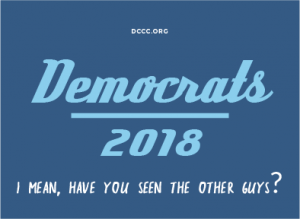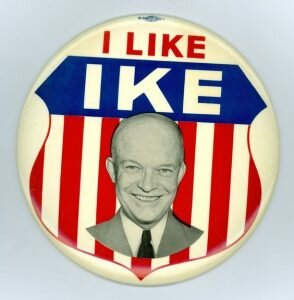Political Bumper Stickers are Dumb and Ugly, but not Pointless
Still reeling from its loss six months into the Trump presidency, the Democratic Party has finally decided to try something new. Or, at least, to put a spin on an age-old political advertising tactic. Last week, the Last week, the party asked its supporters to vote on their favourite of four brand-new bumper sticker designs.
That was a miscalculation, to say the least. The sticker designs were widely ridiculed for lacking substance, invoking cringeworthy catchphrases and self-deprecating humour. It seems unlikely any of the four designs will see the light of day, though countless parodies are sure to adorn many a bumper in the coming midterm elections.
You would think something as simple as bumper sticker is hard to mess up. It’s a tiny, rectangular box, designed to be squinted and scoffed at from behind the wheel of another car. But as I see it, bumper sticker advertising is no different from most other ads out there.
I think the makings of a good bumper sticker are the same as those of a good headline or a good Tweet. The message must be short. It must be memorable, and easy to read. And, of course, it has stand out.
Some people argue that bumper stickers are a waste of space. This is a common excuse I’ve seen for the Democratic Party’s sticker shenanigans. No one reads bumper stickers anymore, so what’s the point?
It’d doubtful a sticker ever going to persuade someone to vote one way or the other. But it could certainly motivate them to Google a name, or an idea, especially if it’s something bizarre.
The bumper sticker also has advantages over other forms of advertising. We’re becoming ever more skillful at ignoring ads, developing PVR and Adblock to circumvent the messages our content providers impose on us. Bumper stickers are one of the few forms of advertising that still have a captive audience.
Sure, you could just ignore them. But why would you? Being stuck in traffic or waiting for a light to change is boring. You can’t really admire your surroundings because you have to pay attention to what’s in front of you. As a smart, responsible citizen, there’s no way you’re about to pull out your phone while you’re operating a motor vehicle.
So what do you do? You stare straight ahead, and your eye is drawn to whatever’s in your line of sight. If there’s a bold message on a little white box, you’re going to read it. You can’t resist.
If you’re already planning on dropping flyers, going door-to-door, and putting up a yard sign, you might as well add a bumper sticker to your political advertising suite. If nothing else, it’ll show hopeless and apathetic voters that there are, in fact, other supporters in town, and it might be worth voting after all.
Might as well take another swing at the whole bumper sticker thing, Democrats. At least there’s plenty of time to come up with a good slogan for the 2018 midterm elections.
I Like Ike: The First Political TV Ad
You like Ike. I like Ike. Who doesn’t love this campaign?
It ranks as among the most memorable political marketing of the 20th century. Not only is it one of the great entries in campaign advertising, it’s great advertising, period. I Like Ike is catchy. It’s succinct. It’s memorable.
Before ‘viral’ was a form of marketing in and of itself, I Like Ike had voters tapping their toes and humming along all the way to the ballot box.
Dwight Eisenhower, playfully nicknamed “Ike”, lead the Allied forces to victory at the end of the second world war. He was subsequently promoted to Chief of Staff of the United States Army and named Supreme Commander of NATO. Not surprisingly, this made him enormously popular. He was a war hero with a friendly face.
Unlike our current crop of politicians, many of whom are born and bred to run for Congress or Senate, Ike Eisenhower bore no intentions of becoming president. He rejected all requests for him to enter the political realm for years.
Ike didn’t like politics. He was a soldier, and a leader, but not a politician. In fact, before his own election, he had never even voted.
But that didn’t matter in 1952. Slow progress in the Korean War had made President Harry Truman unpopular, with a 66% disapproval rating. Democrats were desperate to fix their brand, and Republicans eager to overtake them. Recognizing that Americans had an affinity for the General, sectors of both parties set out to ‘draft’ Ike to their side.
Peter G. Peterson, the Republican who would later be Secretary of Commerce under Richard Nixon, snatched “I Like Ike” from the mouths of voters and built it into an marketing push. It caught on. Over a hundred thousand voters wrote-in Ike’s name for the Republican New Hampshire primary, despite him not having announced for either party.
The unprecedented show of support pushed him to formally enter the race.
With the support of the Republican Party, “I Like Ike” reached new heights in the general election. Famed songwriter Irving Berlin turned it into a song. Walt Disney Studios produced a cartoon to go along with it, which became the first political campaign ads aired on television.
The rest is history. Ike Eisenhower won with 55% of the popular vote. He topped himself in 1956, winning re-election with 58%.

